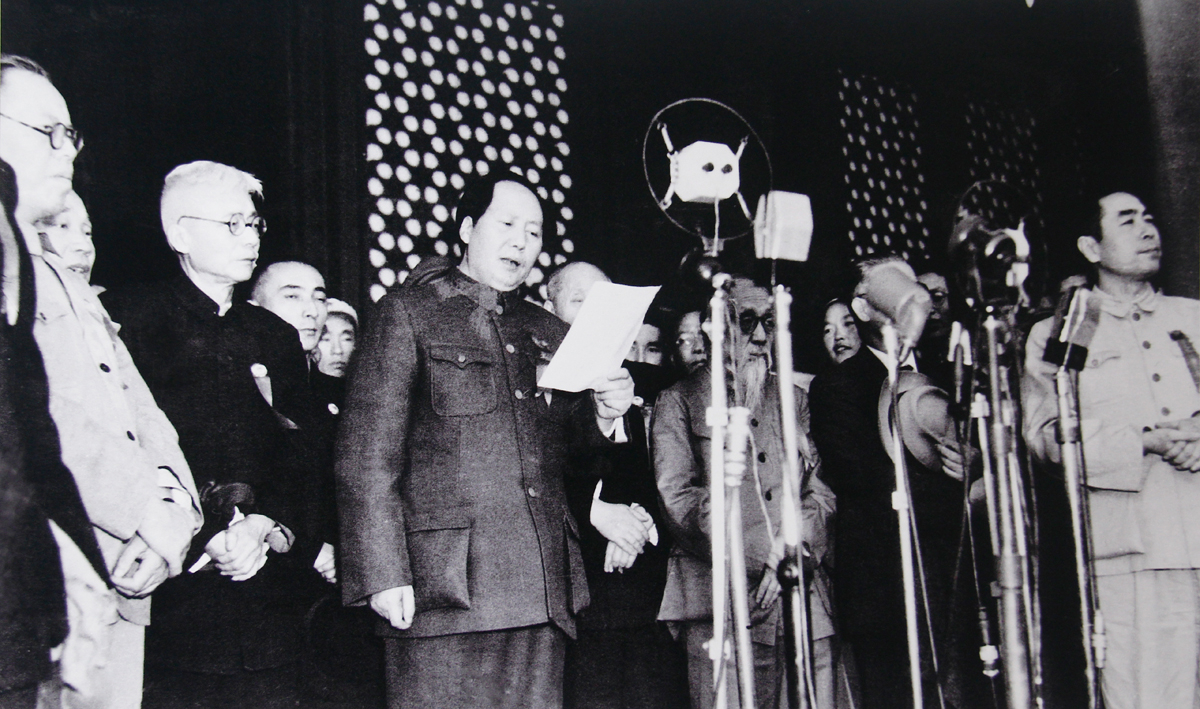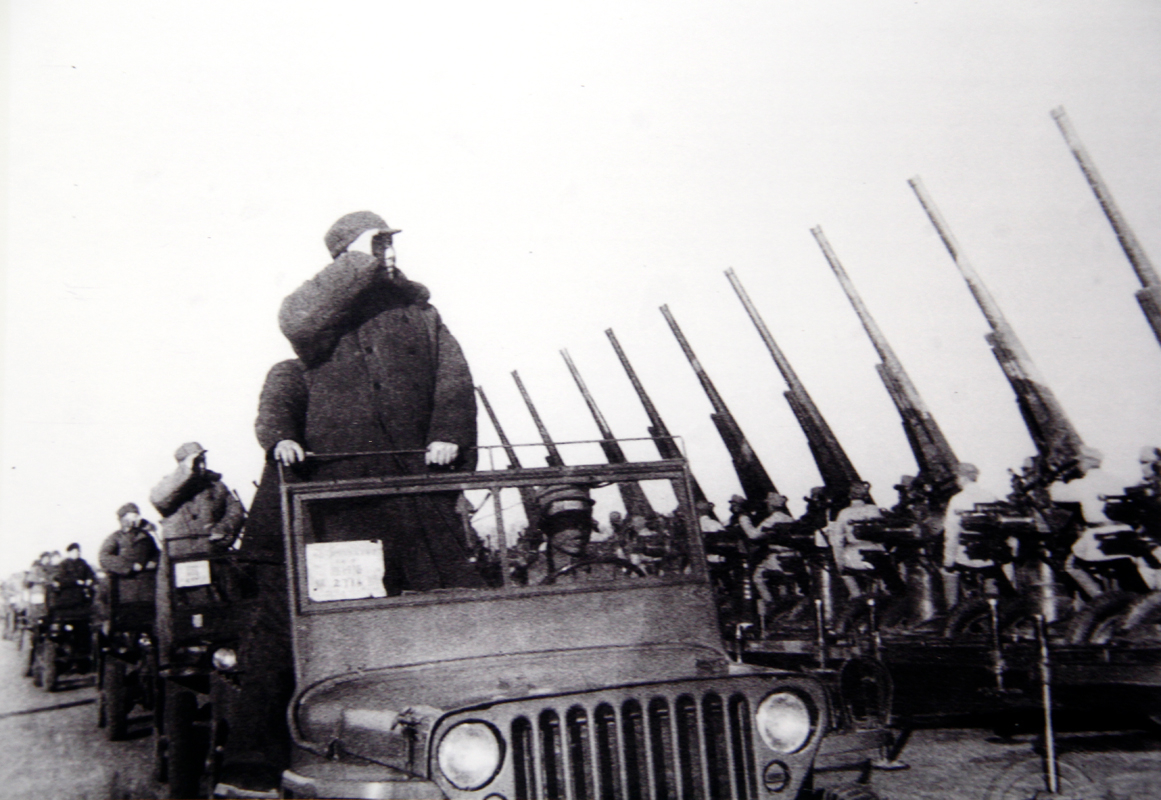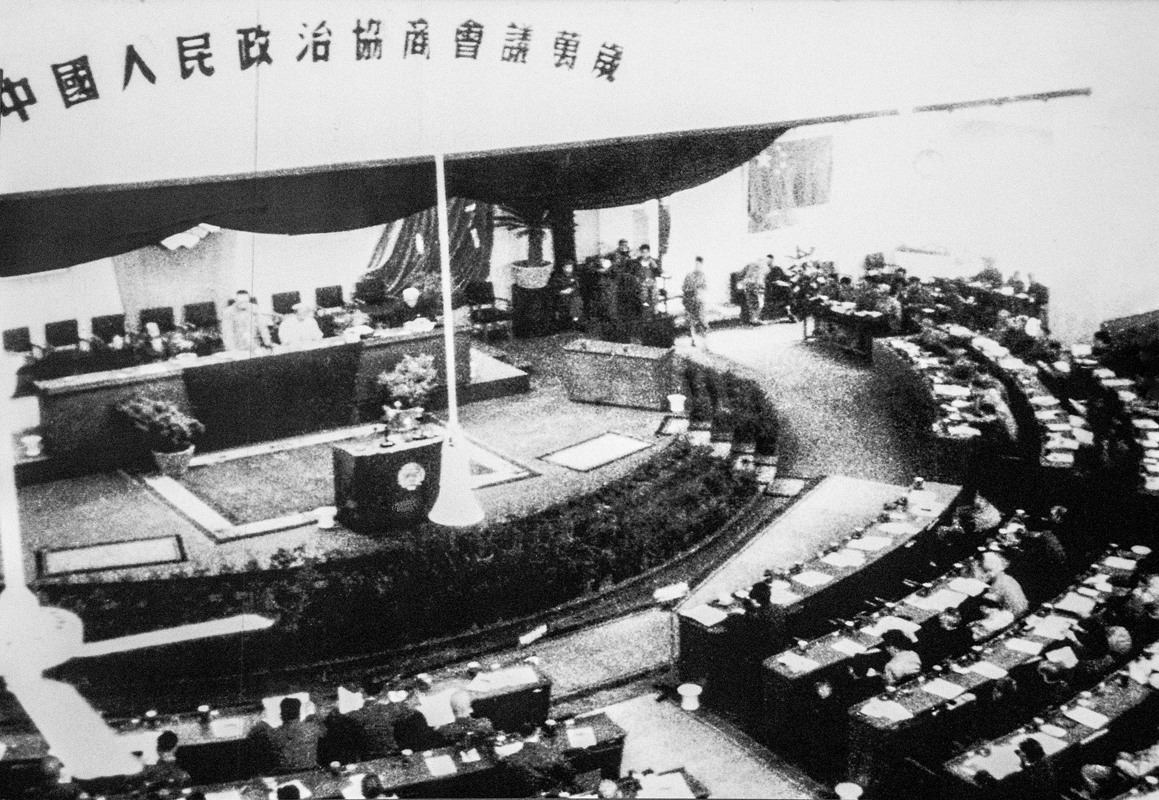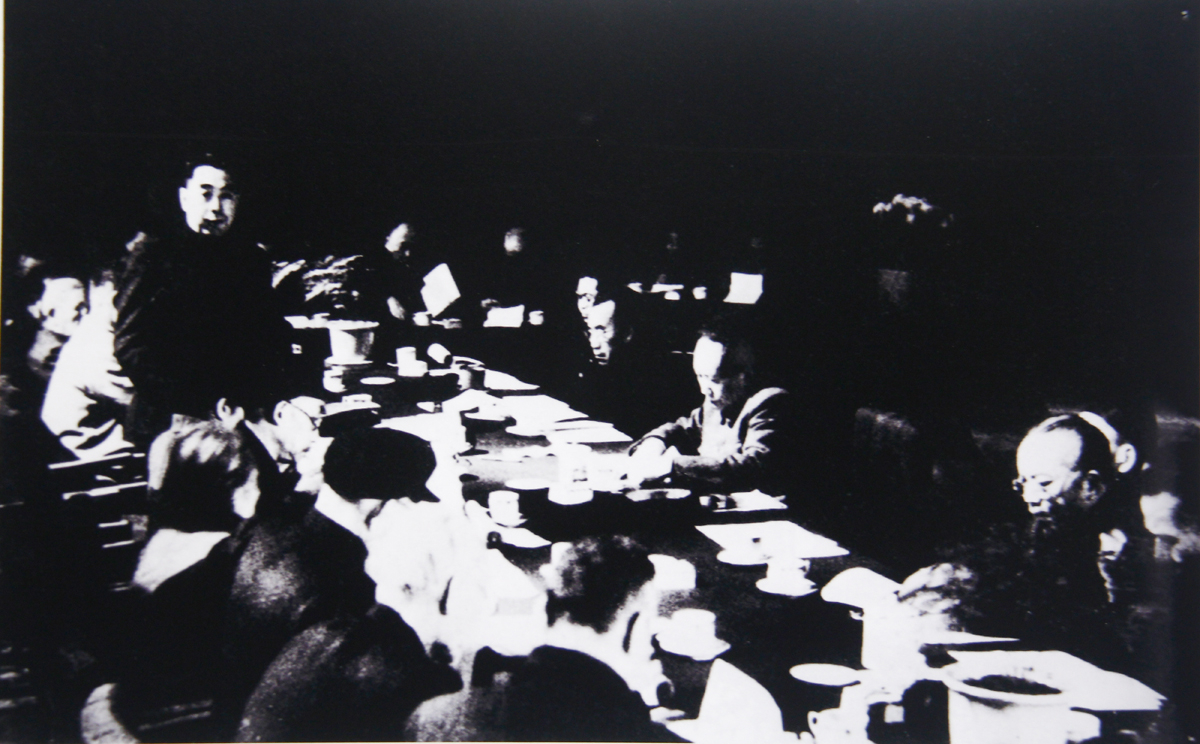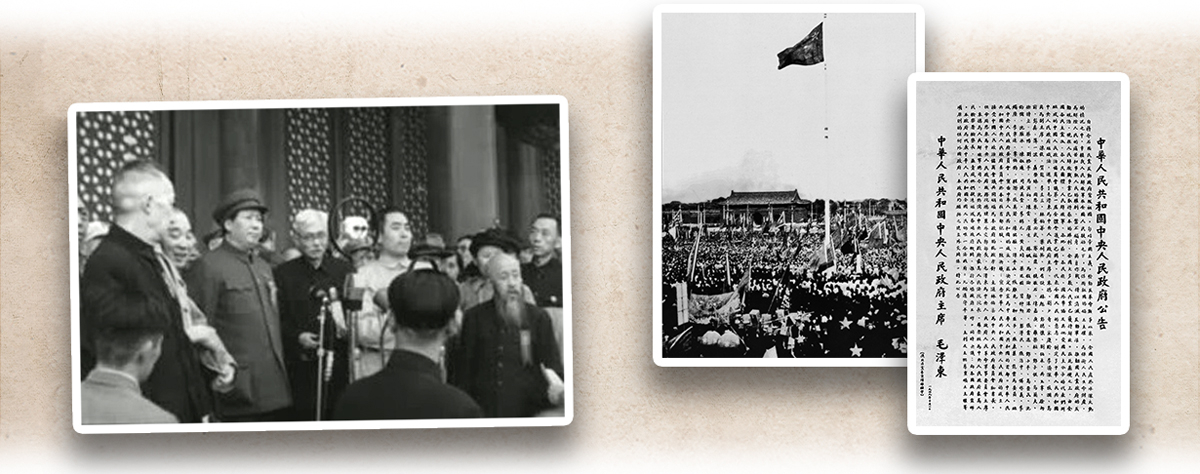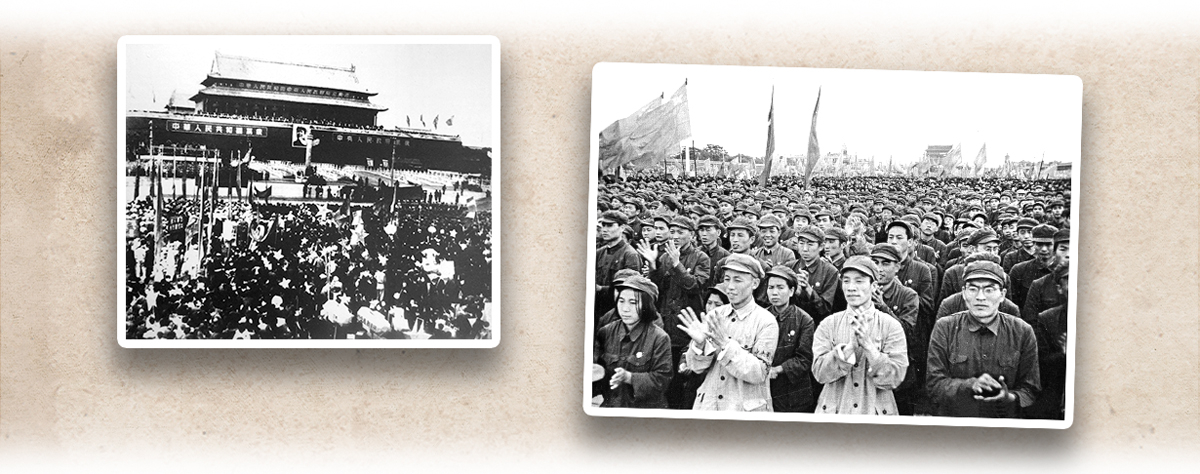During the Chinese Civil War, the Chinese Communist Party (CCP, 中國共產黨) Central Committee moved from Yan’an (延安) in northern Shaanxi Province (陝西) to Xibaipo (西柏坡) in Hebei Province (河北). In March 1949, the CCP held the Second Plenary Session of the Seventh CCP Central Committee in Xibaipo, and decided to shift the focus of the party’s work from rural to urban areas. On 25 March, the CCP Central Committee moved to Beiping (北平, now Beijing﹝北京﹞) and began to establish a new national regime. From 21 to 30 September 1949, the First Plenary Session of the Chinese People’s Political Consultative Conference was held in Beiping. The session exercised the power on behalf of the future legislature, the National People’s Congress, to pass the Common Programme that served as the provisional constitution, and decide the establishment of the People’s Republic of China, a people’s democratic dictatorship led by the CCP. The conference approved Beijing as the capital city, and that the March of the Volunteers as the temporary national anthem (which later became the official national anthem). It also approve the adoption of the five-star red flag as the national flag and the solar calendar. Mao Zedong (毛澤東) was elected as Chairman of the Central People’s Government, and Zhu De (朱德), Liu Shaoqi (劉少奇), Soong Ching-ling (宋慶齡), Li Jishen (李濟深), Zhang Lan (張瀾), and Gao Gang (高崗) as Vice Chairpersons.
At 2pm on 1 October 1949, the First Conference of the Central People’s Government Committee appointed Zhou Enlai (周恩來) as Premier and Minister of Foreign Affairs of the Government Council, and Zhu as Commander-in-Chief of the People’s Liberation Army (PLA). At 3pm, the Founding Ceremony officially began. Mao stood atop Tian’anmen to announce to the world the founding of the Central People’s Government of the People’s Republic of China. With the establishment of the People’s Republic of China, China’s modern history entered a new era.
|
|
What are the many different names used for the Kuomintang of China (KMT, 中國國民黨), the Chinese Communist Party, the Chinese Civil War, and even the change of power in Mainland China in 1949? |
|
|
See answer below. |
In March 1949, the CCP held the Second Plenary Session of the Seventh CCP Central Committee in Xibaipo, Hebei. Mao Zedong made a report at the session, pointing out that the focus of the party’s work should be shifted from rural to urban areas.
On 25 March 1949, the CCP Central Committee and the PLA headquarters were moved from Xibaipo to Beiping. The photo shows Mao Zedong, Zhu De, Liu Shaoqi, Zhou Enlai, and Ren Bishi reviewing the troops at Xiyuan Airport (西苑機場) in Beiping.
From 21 to 30 September 1949, the First Plenary Session of the Chinese People’s Political Consultative Conference was held at Huairen Hall (懷仁堂), Zhongnanhai (中南海), Beiping. The conference passed the Common Programme; approved Beijing as the capital city, the national anthem and the national flag; and elected the Chairman and Vice Chairpersons of the Central People’s Government.
On 30 September 1949, the Chinese People’s Political Consultative Conference elected Mao Zedong as Chairman of the Central People’s Government, and Zhu De, Liu Shaoqi, Soong Ching-ling, Li Jishen, Zhang Lan, and Gao Gang as Vice Chairpersons. In the photo from the left: Liu, Zhu, Mao, Soong, Li, Zhang, and Gao.
At 2pm on 1 October 1949, the First Conference of the Central People’s Government Committee appointed Zhou Enlai as Premier and Minister of Foreign Affairs of the Government Council, and Zhu De as Commander-in-Chief of the PLA. The photo shows Zhou speaking at the conference.
At 3pm on 1 October 1949, Mao Zedong reading out the Notice of the Central People’s Government of the People’s Republic of China and proclaiming the founding of the People’s Republic of China at the Founding Ceremony at Tian’anmen Square in Beijing.
Three photos related to the Founding Ceremony, from the left: the moment Mao Zedong announcing the founding of the People’s Republic of China; the national flag of the People’s Republic of China ascending over Tian’anmen Square; and the Notice of the Central People’s Government of the People’s Republic of China read out by Mao.
About 300,000 people in Beijing attending the Founding Ceremony at Tian’anmen Square.
Zhu De, the Commander-in-Chief of the PLA, reviewing the troops at the Founding Ceremony.
The military parade of the Founding Ceremony at Tian’anmen Square.
|
|
What are the many different names used for the KMT, CCP, the Chinese Civil War, and even the change of power in Mainland China in 1949? |
|
|
The two parties and researchers called the same thing differently due to different stances. They could be heavily biased or relatively neutral. It is important for us to know them in the study of history even we may not share the same stance. The KMT often called the CCP “Red Communists”, “Red Bandits”, “Communist Bandits”, “Slaughter Pig and Shave Hair”, with “pigs” (zhu) and "hair" (mao) are homophones of the surnames of Zhu De and Mao Zedong; while the CCP called its opponents the “Party of Scraping the People” and the “Chiang Gang” (Chiang as Chiang Kak-shek﹝蔣介石﹞). The Chinese Civil War between the two parties that lasted from 1946 to 1949 has been called the “Mobilisation for Suppressing Rebellion” or “Rebellion Suppression War” by the KMT, while the CCP called it the “Chinese Liberation War” or the “Third Revolutionary Civil War” (the Northern Expedition and the ten-year armed confrontation between 1927 and 1937 were the “First Revolutionary Civil War” and the “Second Revolutionary Civil War” respectively). More neutral terms are the “Second KMT-CCP Civil War” or the “Chinese Civil War”. In the West, it is also known as the “Chinese Communist Revolution”. As for the change of the mainland regime in 1949: the KMT referred to it as the “Fall of Mainland”, while the CCP called it the “National Liberation”. In Hong Kong and Macao it is known as “the mainland regime changed hands”. When it comes to the Taiwan issue, the KMT emphasised “counter-offensive against the mainland”, while the CCP stressed on “liberating Taiwan”. |
Sources of most photos used in this feature piece: Fotoe.




